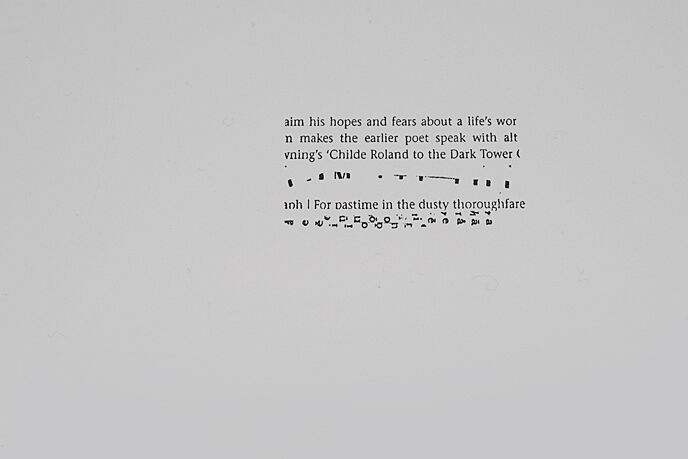Cut and Paste
Use found text to create a poem with a shape
Susan Howe creates poetry out of found text from literary or history books and documents. She culls excerpts from the texts as well as the marginal text such as footnotes and table of contents. Using copies of these sources, she cuts out sentences and fragments, pasting and taping them together but retaining the typefaces, spacing, and rhythms of the original source. Her compositions are built both by control and chance arrangements. Howe said: “. . .I often think of the space of a page as a stage, with words, letters, syllable characters moving across.”
a. Use these resources to view and discuss the ways in which Susan Howe creates poetry:
Susan Howe on the Poetry Foundation’s website.
Susan Howe, The Art of Poetry No. 97, interviewed by Maureen N. McLane, Paris Review.
b. Ask students to use found text to create a poem with a shape. Have students think of something that inspires them, such as a book, movie, music, sports, politics, or current events. You could also relate this project to the literature, music, and art that students are studying in class, or use the Whitney’s website to create a found poem in response to a work of art: http://whitney.org/education/for-teachers/Collection or http://whitney.org/exhibitions/2014-biennial
c. Ask students to find text from magazines, newspapers, subway maps, school flyers and newspapers, menus, computer printouts, text on the Internet, and scrap paper. As they choose the text, have students pay attention to font, form, size, scale, and color. Ask them to experiment with the composition of the text and how it will look on the paper?with control and by chance.
d. What shape do students want their poem to take? How does the poem’s shape relate to its content? Use magic tape or glue sticks or clear tape to adhere the found text to a sheet of paper. Have students share their poems with the class. What shapes and subjects did students choose? What surprised students about their poems?

